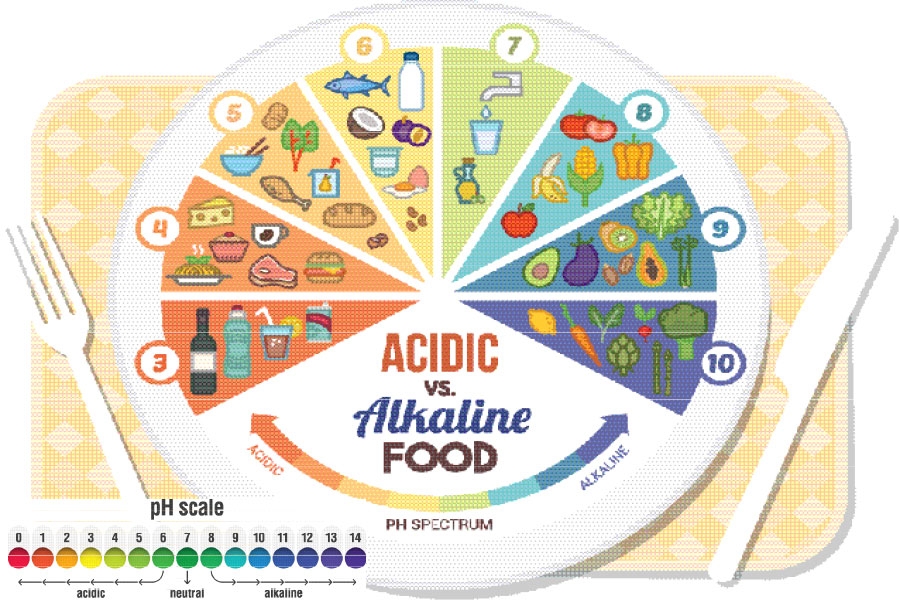The PH Balancing Act: Keeping Skin Youthful and Healthy
Written by Alissa de Jongh, ND, owner of Glacé Skin TherapyThink back to basic chemistry and how exciting it was when the teacher passed around the litmus paper. Would it turn blue or red and what would it mean when the color did appear? That information was important back in school for getting good grades, but understanding it is even more important today, as it could mean the difference between healthy glowing skin or dull problematic skin. The pH scale is a measurement of aqueous solutions between 1 and 14 with 7 being neutral. Those below 7 are considered acidic and those above 7 are call basic or alkaline. The pH or potential hydrogen scale considers the measure of hydrogen ion concentration in determining the acidity or alkalinity of a solution. The challenge in today’s world of never-ending skin care options is to find the pH listed on the package, as not all manufacturers include it on the label. However, it is very important to understand what the pH of products are when deciding on a regimen for clients to ensure the products create the optimal environment needed for the skin to thrive.
WHAT DOES pH DO?
The integumentary system is amazing as it provides the coat of armor perfectly designed to protect the skin by fighting infection-causing bacteria, as well as environmental stressors. In order to do this, skin must have a slightly acidic pH of around 5.5. This protective barrier is often referred to as the acid mantle or lipid barrier and is made of ceramides, free fatty acids or sebum, and lipids. When alkaline-loving bad bacteria attempts to invade the skin, its 4.5 to 6.0 pH acid mantle provides the perfect ecosystem to ward them away. Additional protection is also provided by the lipid barrier as it holds precious water in preventing transepidermal water loss from happening, which tends to be one of the main causes of dry skin. Any disruption to the pH, whether it is too acidic or too alkaline, will certainly contribute to weakening the barrier and opening the possibility for skin conditions such as eczema, acne, rosacea, and other types of dermatitis to develop.
HOW CAN THE BALANCE OF THE SKIN’S pH BE RESTORED?
There are many different factors that affect the pH of a person’s skin. Help clients take an inventory of the following lifestyle items as they relate to self-care because they might just be the key needed to start the balancing process. Managing the delicate terrain inside and out of the body can seem like a mystery. That said, using the list below as a starting guide will catapult effectiveness in building up the skin’s defense system and help balance the pH, creating a glow on the skin from within.
- Sleep: Get seven to eight hours each night.
- Nutrition: Eat leafy green vegetables, EFA, citrus fruits, tomatoes, and so forth.
- Exercise: Move so that sweat is created to eliminate toxins from the body.
- Water: Drink half of personal body weight in ounces per day (flavor by squeezing in fresh lemon or lime).
- Products: Cleanse, tone, and moisturize using pH balanced skin care.
- Sun: Use sunscreen to protect skin from sun damage.
- Stress: Incorporate meditation and other methods to lower stress
Although each of these factors are important, choosing the right skin care products can quickly help in repairing the barrier by balancing pH on the outside. Many people with oily skin choose a stripping alkaline cleanser to help them achieve that “clean” feeling. However, the best choice would be a cleanser that removes the dirt and debris leaving behind an intact acid mantle to inhibit any bacterial growth and prevent acne. On the other end of the spectrum, people with dry or aged skin use products such as alpha hydroxy acids, beta hydroxy acids, or retinoic acid which, if not used properly, can weaken the natural barrier, causing redness and drying of the skin. Additionally, other important considerations when choosing skin care products come into play, namely helping to fortify and protect the cells, both of which can be accomplished by incorporating antioxidants like vitamins A, C, E, and green tea.
Probiotics have been all the rave during the last few years. People are starting to understand how probiotics work to restore and balance good bacteria both externally on the skin and internally in the gut where they work to decrease disruption of good bacterial flora. Feeding the body with proper nutrition, allowing for good sleep, and drinking plenty of water all serve the skin well by providing the necessary environment for success. Last, but certainly not least, treating skin delicately by selecting pH balanced products and then adhering to a good topical regimen are habits that will lend to protection of the acid mantle, which, when intact, reveals healthy, youthful, glowing skin.
